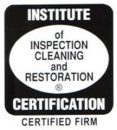Welcome to our article on water damage! Whether you’ve experienced a flood or a pesky leak at home, water damage can wreak havoc on your possessions and leave you with a hefty repair bill. In this article, we will explore the specific items and belongings that are most vulnerable to water damage, helping you understand the potential consequences and the importance of taking preventive measures.
Water damage can affect various areas of your home, from the structure itself to your cherished belongings. By understanding the impact that water can have, you can be better prepared to protect your property and mitigate potential damages.
Understanding the Impact of Water Damage
Water damage can have significant consequences for your property, causing both immediate and long-term damage. Floods or leaks can lead to various types of property damage, including structural damage. Understanding the impact of water damage is crucial to taking prompt action and mitigating further harm to your home.
When water infiltrates your property, it can seep into structural components such as walls, floors, and ceilings. Over time, this can weaken the structural integrity of your home, compromising its stability. Structural damage from water can manifest in the form of cracks, warping, sagging, or even collapse if left unaddressed. It is important to note that even small, seemingly insignificant amounts of water can gradually cause significant damage to the structure of your home.
In addition to structural damage, water can wreak havoc on other areas of your property. It can damage electrical systems, leading to potential safety hazards and the need for costly repairs. Water can also damage insulation, drywall, and other building materials, resulting in the need for extensive renovations.
The impact of water damage is not limited to the physical structure of your home. It can also affect your belongings, leading to property damage. Furniture, carpets, and upholstery can be ruined, requiring replacement or extensive restoration efforts. Water damage can also destroy important documents, sentimental items, and cherished photographs, causing irreversible loss.
The Consequences of Water Damage:
- Structural damage compromising the stability of your home
- Potential safety hazards from damaged electrical systems
- Costly repairs and renovations to building materials
- Irreparable damage to furniture, carpets, and upholstery
- Loss of important documents, sentimental items, and photographs
| Area of Impact | Effects of Water Damage |
|---|---|
| Structural | Increased risk of collapse, weakened stability, compromised foundation |
| Electrical Systems | Electrical malfunctions, potential fire hazards, need for repairs or replacements |
| Building Materials | Warped walls, ceilings, and floors, damaged insulation, mold growth |
| Furniture and Upholstery | Water absorption, irreversible damage, mold growth |
| Documents and Belongings | Loss of important documents, sentimental items, and cherished photographs |
The Toll on Furniture and Upholstery
When it comes to water damage, furniture and upholstery are particularly vulnerable. The aftermath of water-related incidents can leave your cherished pieces in disarray, with irreversible consequences.
Water damaged furniture can suffer from various issues, including discoloration, warping, and structural instability. Prolonged exposure to moisture can weaken the wood, causing it to swell or warp, making the furniture unsightly and potentially unusable.
Additionally, ruined upholstery is a common result of water damage. Fabrics, such as couches, chairs, and mattresses, absorb water quickly, leading to staining, foul odors, and the growth of mold and mildew. Mold growth not only further damages the upholstery, but it also poses health risks to you and your family.
Taking immediate action is crucial when dealing with water damaged furniture. Here are a few steps you can follow in case of an incident:
- Remove the furniture from the affected area and place it in a well-ventilated space.
- Wipe off any excess water using absorbent materials like towels or paper towels. Avoid rubbing, as it may worsen the damage.
- Allow the furniture to air dry thoroughly, preferably under sunlight or with the help of fans.
- Consider consulting professional furniture restoration specialists who can mitigate the damage and help salvage your valuable pieces.
Prevention is always better than cure when it comes to water damage. To protect your furniture and upholstery from potential disasters, consider the following preventive measures:
- Ensure proper insulation and waterproofing of your home, especially in areas prone to leaks or flooding.
- Place furniture away from windows, pipes, or areas where water damage is more likely to occur.
- Invest in water-resistant coverings or treatments for your upholstery, such as waterproof slipcovers or stain repellents.
- Inspect and maintain your plumbing regularly to identify and address any potential leaks or water-related issues promptly.
| Preventive Measures | Action Steps |
|---|---|
| Ensure proper insulation and waterproofing of your home | Consult professionals to assess and improve the waterproofing system in your home. |
| Place furniture away from windows, pipes, or areas prone to water damage | Reposition furniture to minimize the risk of exposure to water sources. |
| Invest in water-resistant coverings or treatments for your upholstery | Purchase waterproof slipcovers or apply a fabric protector to safeguard your upholstery. |
| Inspect and maintain your plumbing regularly | Schedule routine plumbing checks and promptly fix any leaks or issues identified. |
Electronics and Appliances: Vulnerable to Water Damage
When it comes to water damage, your electronics and appliances are not immune. In fact, they are highly susceptible to the detrimental effects of water infiltration. Water can render these devices unusable and pose serious electrical hazards, resulting in costly replacements or repairs.
Water damaged electronics can range from smartphones and laptops to televisions and gaming consoles. Even a small amount of water can cause irreversible damage and render these devices inoperable. Moisture can corrode internal components, leading to short circuits and permanent malfunctions.
Similarly, water can ruin appliances such as washing machines, refrigerators, and dishwashers. These essential household items rely on complex electrical systems that can be easily compromised by water. Leaks or flooding can damage circuitry and motors, rendering the appliances ineffective and potentially hazardous.
Furthermore, water-damaged electronics and appliances can pose electrical hazards to you and your family. The presence of water increases the risk of electric shock, potentially causing severe injuries or even fatalities. It is crucial to exercise caution and avoid using any electronic device or appliance that has been exposed to water.
To highlight the importance of protecting your electronics and appliances from water damage, consider the following statistics:
- According to a study by Statista, the global water damage restoration market is expected to reach $29.38 billion by 2025.
- The Insurance Institute for Business & Home Safety reports that water damage is the second most frequently filed homeowners insurance claim in the United States.
- A survey conducted by the Pew Research Center reveals that 81% of Americans own a smartphone, making it one of the most common electronic devices in households.
Given these risks and statistics, it is essential to take proactive steps to protect your electronics and appliances from water damage. Ensure that all electrical devices are kept away from areas prone to water leaks or flooding. Invest in waterproof cases or covers for portable electronics and consider installing water detectors or shut-off valves to mitigate potential damages.
Remember, prevention is key when it comes to water damage and preserving your electronics and appliances. By taking the necessary precautions, you can safeguard your valuable devices, avoid costly repairs, and eliminate the risk of electrical hazards.
Important Documents and Personal Belongings
When it comes to water damage, important documents and personal belongings are not exempt from the devastating effects. In the event of a flood or water leak, these invaluable items are at risk of being irreparably ruined, causing both emotional and practical difficulties.
The loss of water damaged documents can have serious consequences, ranging from legal and financial complications to the loss of cherished memories. Important papers such as passports, birth certificates, and property deeds can become distorted, discolored, or illegible, rendering them useless. Recovering or replacing these documents can be a time-consuming and costly process.
Additionally, sentimental items like photographs and heirlooms hold immense personal value, connecting us to our past and loved ones. Unfortunately, water damage can cause irreversible harm to these precious mementos, leading to the loss of irreplaceable memories and emotional attachments.
To mitigate the risk of water damage to important documents and personal belongings, it’s crucial to take preventive measures. Storing documents in waterproof containers or safes and keeping personal belongings elevated or away from potential water sources can help minimize the likelihood of damage.
In the unfortunate event that water damage occurs, it’s important to act swiftly. Remove water-damaged documents from the affected area and consult a professional document restoration service as soon as possible. They have the expertise and specialized equipment to salvage and restore water-damaged documents, increasing the chances of successful recovery.
Remember, the value of these items often extends far beyond their monetary worth. Protecting water damaged documents and preserving sentimental possessions is paramount in safeguarding your cherished memories and maintaining your peace of mind.
Conclusion
Water damage can cause significant harm to your home and belongings, making it crucial to take preventive measures. By understanding the impact of water damage and being aware of the specific items and possessions at risk, you can better protect your property.
One of the most vulnerable areas to water damage is furniture and upholstery. Water can seep into the fibers, causing irreversible damage and promoting the growth of mold. It’s important to address any water damage to these items promptly and seek professional restoration services if necessary.
Electronics and appliances are also susceptible to water damage, with potential consequences ranging from rendering them unusable to electrical hazards. To avoid costly replacements or repairs, it’s essential to keep these devices away from water sources and address any water damage immediately.
Lastly, documents and personal belongings hold immense value, both monetarily and sentimentally. Water damage can result in the loss of important documents, photographs, and cherished sentimental items. Safeguarding these possessions through proper storage and preventative measures is crucial to minimize the risk of damage.
In conclusion, taking proactive steps to prevent water damage and mitigate its impact is vital. Regular maintenance, inspections, and prompt remediation efforts can help protect your home and belongings. If you do encounter water damage, seeking assistance from professional remediation and restoration services is highly recommended to ensure thorough and effective recovery.
FAQ
What items can be ruined by water damage?
Water damage can ruin a wide range of possessions, including furniture, electronics, appliances, important documents, personal belongings, and upholstery.
How does water damage impact your property?
Water damage can have significant consequences for your property, including structural damage, compromised foundations, weakened walls, and potential mold growth.
What are the risks of water damage to furniture and upholstery?
Water damage can ruin furniture and upholstery by causing warping, discoloration, mold growth, and irreversible damage that may require replacement.
How vulnerable are electronics and appliances to water damage?
Water can render electronics and appliances inoperable, leading to costly repairs or replacements. It can also pose electrical hazards, making them dangerous to use.
Are important documents and personal belongings at risk of water damage?
Yes, water damage can pose a significant risk to important documents and personal belongings, such as photographs and sentimental items. Loss of such items can be irreparable.
What should I do if I encounter water damage?
If you encounter water damage, it is crucial to take immediate action. Disconnect electrical sources, remove water-damaged items, and contact professionals for remediation and restoration to prevent further damage.


















